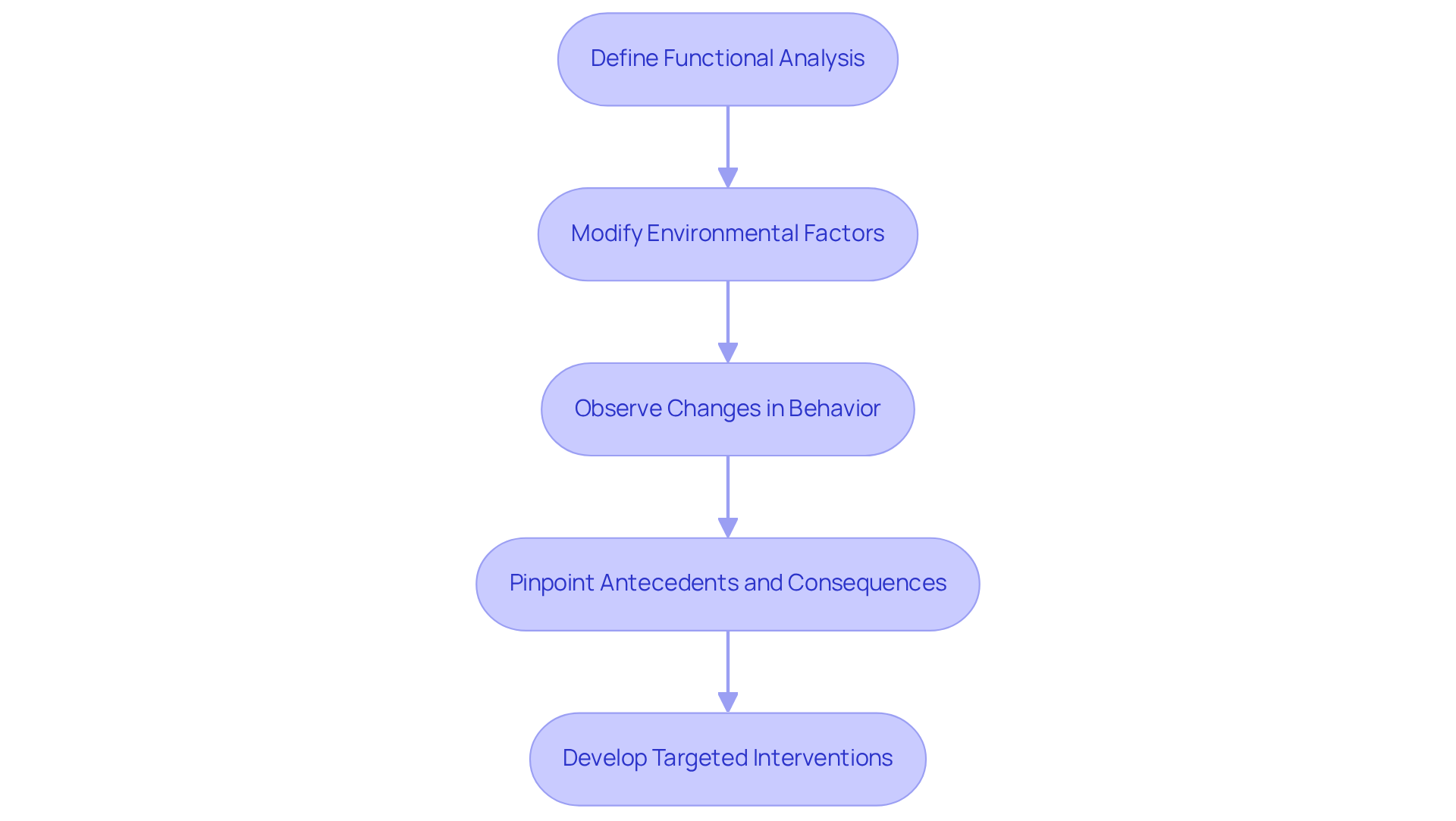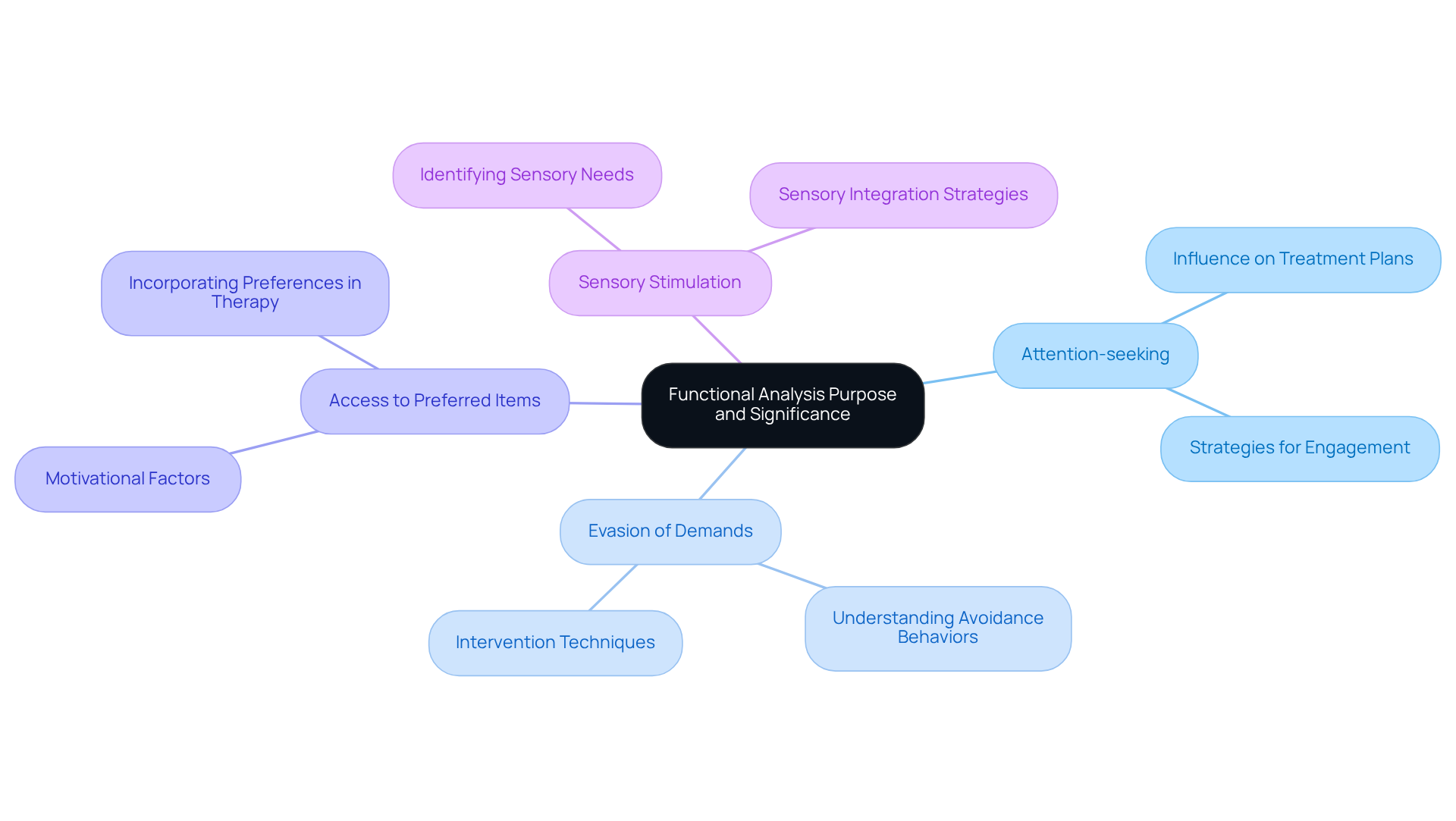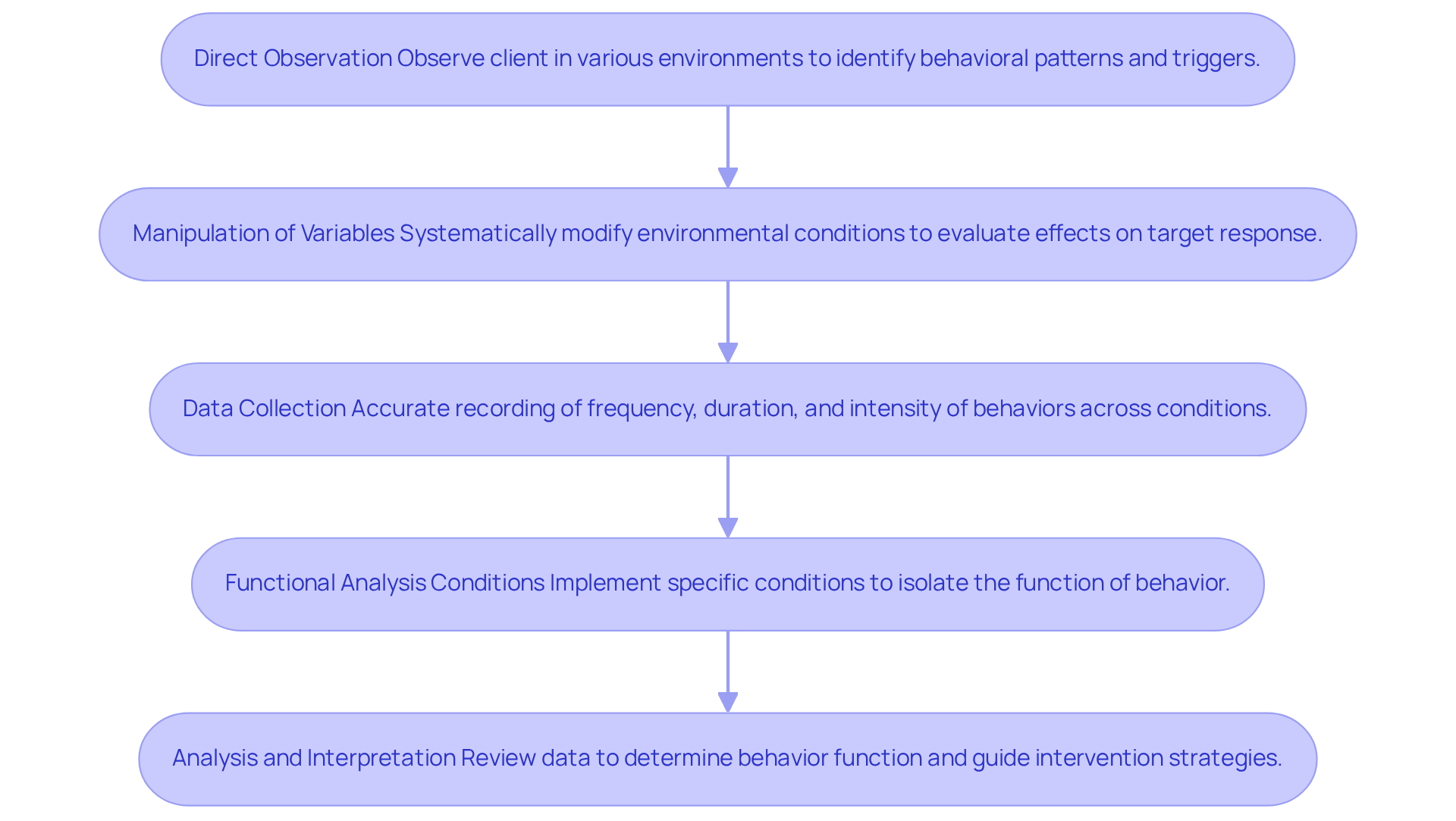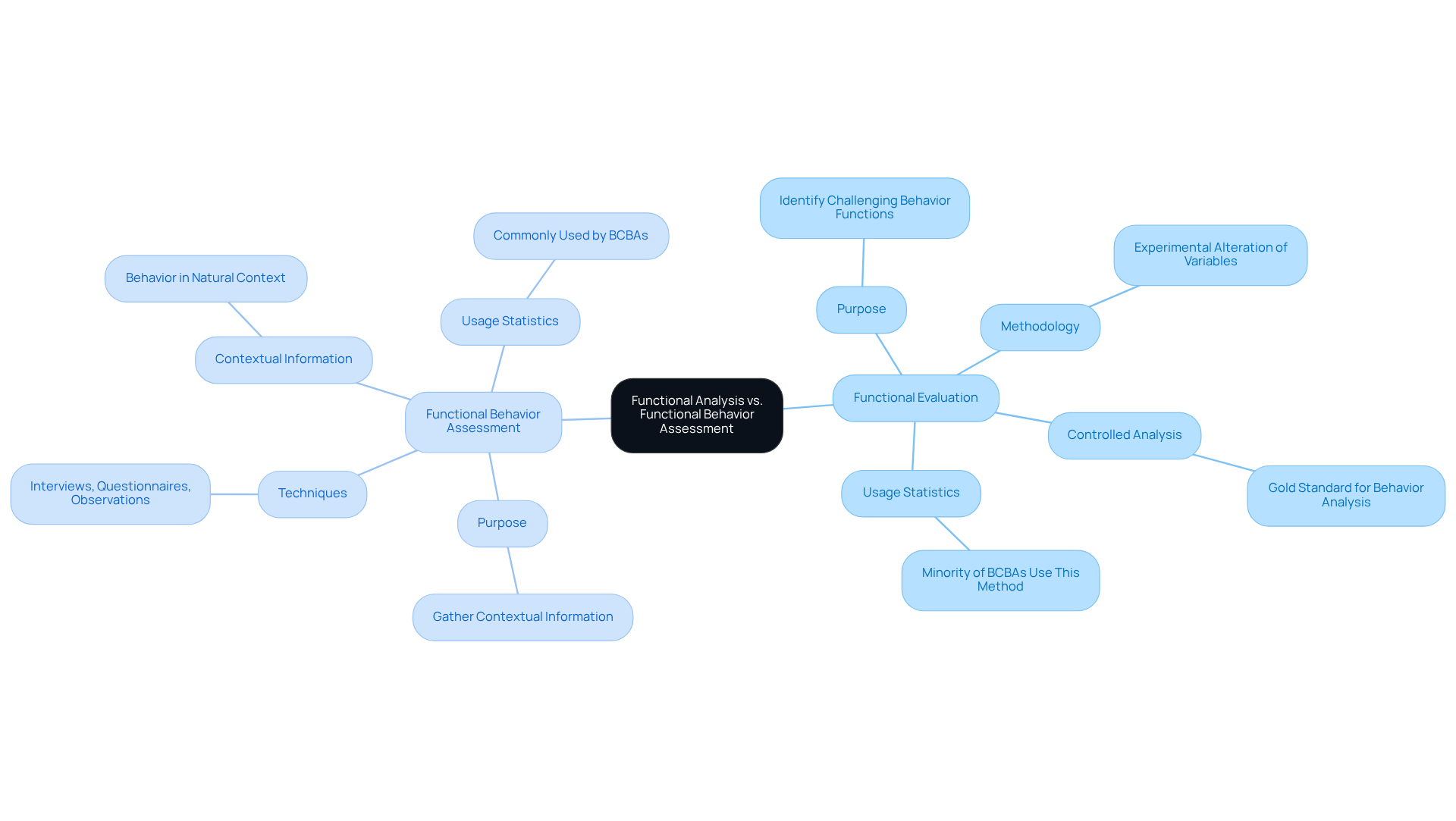July 5, 2025

Functional analysis in Applied Behavior Analysis (ABA) serves as a systematic method to uncover the underlying functions of specific behaviors. By manipulating environmental factors and observing the resulting changes, practitioners can gain valuable insights. This approach empowers professionals to develop targeted interventions rooted in empirical data. Consequently, treatment effectiveness is significantly enhanced, ensuring that interventions are meticulously tailored to meet the unique needs of each client.
Functional analysis in Applied Behavior Analysis (ABA) stands as a pivotal tool that intricately explores the complexities of human behavior, unveiling the underlying motivations behind actions. This systematic approach not only empowers practitioners to craft tailored interventions but also underscores the ethical imperative of understanding individual client needs. Yet, a significant gap persists, as many professionals continue to rely on less rigorous methods, casting doubt on the effectiveness of treatment outcomes.
How can the integration of functional analysis revolutionize the future of ABA practices and profoundly enhance the lives of those it serves?
Functional analysis ABA serves as a systematic method designed to ascertain the function or purpose of specific actions. This method involves modifying environmental factors to observe changes in behavior, allowing practitioners to pinpoint the antecedents and consequences that sustain the conduct. By isolating these variables, analysts can develop targeted interventions that tackle the underlying causes of issues, rather than merely alleviating symptoms. This process is essential to evidence-based practice in functional analysis ABA, guaranteeing that interventions are tailored to meet the unique needs of clients based on empirical data.
The significance of [practical evaluation in ABA therapy](https://nexoaba.com/applied-behavior-analysis-statistics) is underscored by functional analysis ABA, with numerous professionals relying on it to inform treatment decisions. Recent studies indicate that while practical evaluations are considered the gold standard, a notable proportion of (BCBAs) still resort to less rigorous techniques, such as descriptive evaluations and indirect assessments, which may not provide the same depth of insight into behavior functions. Current data reveals that approximately 34.8% of BCBAs consistently utilize practical assessments, in contrast to 94.7% who depend on these less demanding methods. This disparity accentuates the necessity of integrating practical evaluation into routine practice to enhance treatment effectiveness and client outcomes.
In conclusion, performance evaluation is not merely a critical component of ABA; it is an indispensable tool for ensuring that interventions are effective and tailored to individual client needs. As Dr. Ivar Lovaas aptly noted, '90% of children achieve significant progress through ABA therapy,' highlighting the potential impact of employing stringent methods like thorough evaluation in treatment.

The primary objective of practical examination is to uncover the underlying causes of challenging behaviors, which may include:
Understanding these motivations allows analysts to develop more effective and personalized treatment plans. For instance, the case study 'How ABA Therapy Helps Manage Difficult Emotions in Children' illustrates how systematic examination can inform interventions that support children in managing their emotions effectively.
The significance of functional analysis aba lies in its ability to provide a data-driven approach to modifying behaviors, ensuring that interventions are not only effective but also ethical and respectful of the client's needs. B.F. Skinner emphasized the importance of observable behaviors, stating that 'the issue is to enhance the manner in which [individuals] are managed,' highlighting the ethical dimensions of interventions. Furthermore, acknowledging the diversity within the Autism spectrum is vital for crafting tailored treatment plans that honor each client's unique requirements. This methodology fosters a deeper understanding of behavioral patterns, leading to and enhanced quality of life for clients.

Conducting a functional analysis ABA requires several essential methodologies that ensure a comprehensive understanding of behavior.
By following these methodologies, practitioners can improve the efficiency of practical evaluation, resulting in more informed and successful interventions in functional analysis ABA therapy. The long-term benefits of ABA therapy emphasize its potential to significantly improve the lives of individuals with ASD, reinforcing the importance of these methodologies.

Functional evaluation and functional conduct assessment (FBA) are often confused, yet they serve distinct purposes within Applied Behavior Analysis (ABA). Functional evaluation is a specific assessment approach that involves the experimental alteration of variables to ascertain the purpose of an action. This method is recognized as the gold standard for identifying the underlying reasons for challenging behaviors. It allows for a controlled analysis of how varying conditions influence conduct. As Nathan A. Call notes, "practical examination is widely recognized as the gold-standard approach for determining the purpose of challenging actions." Conversely, behavioral assessment encompasses a broader array of techniques, including interviews, questionnaires, and direct observations, to gather contextual information regarding a behavior's function without necessarily altering variables.
Statistics reveal that a minority of Board Certified Behavior Analysts (BCBAs) consistently conduct practical evaluations, often due to challenges such as safety concerns and resource limitations. For instance, research shows that only a small percentage of BCBAs primarily utilize practical evaluations, despite their proven effectiveness in improving treatment outcomes.
Understanding the distinctions between these two methods is essential for selecting the appropriate technique based on the client's needs and the specific circumstances surrounding the behavior. While systematic evaluation offers a more empirical and controlled approach, FBA provides a in their natural context, which can be critical for developing effective interventions.
In practice, a functional evaluation might involve structured sessions where specific variables are manipulated to observe changes in behavior. In contrast, an FBA may include caregiver interviews to identify potential triggers and outcomes of the behaviors. This nuanced understanding of functional analysis aba versus functional behavior assessment is vital for effective behavior intervention planning in ABA therapy.

Functional analysis in Applied Behavior Analysis (ABA) stands as a cornerstone for understanding and addressing challenging behaviors by systematically identifying their underlying functions. This approach not only enhances the effectiveness of interventions but also ensures they are tailored to meet the unique needs of individuals. By focusing on empirical data and rigorous methodologies, practitioners can develop strategies that address the root causes of behaviors rather than merely treating symptoms.
Key points throughout the article emphasize the importance of practical evaluation, the methodologies involved in conducting functional analysis, and the distinctions between functional analysis and functional behavior assessment. By utilizing direct observation, manipulation of variables, and thorough data collection, analysts can gain valuable insights into behavior patterns. Additionally, recognizing the differences between functional analysis and broader assessment techniques allows for more informed decision-making in treatment planning.
Given the significant impact that functional analysis has on treatment outcomes, it is crucial for practitioners in the field of ABA to prioritize this approach. By committing to evidence-based practices and understanding the nuances of behavioral assessments, professionals can enhance the quality of care provided to clients. Embracing functional analysis not only fosters ethical treatment but also contributes to better overall therapeutic results, ultimately improving the lives of individuals with Autism Spectrum Disorder and beyond.
What is functional analysis in Applied Behavior Analysis (ABA)?
Functional analysis in ABA is a systematic method used to determine the function or purpose of specific behaviors by modifying environmental factors and observing changes in behavior.
How does functional analysis help in understanding behavior?
It helps by isolating antecedents and consequences that maintain behaviors, allowing practitioners to identify underlying causes and develop targeted interventions.
Why is functional analysis important in ABA therapy?
Functional analysis is essential for evidence-based practice, ensuring that interventions are tailored to meet the unique needs of clients based on empirical data.
What percentage of Board Certified Behavior Analysts (BCBAs) use practical evaluations?
Approximately 34.8% of BCBAs consistently use practical evaluations, while 94.7% rely on less rigorous techniques like descriptive evaluations and indirect assessments.
What are the limitations of less rigorous assessment methods in ABA?
Less rigorous methods may not provide the same depth of insight into behavior functions as practical evaluations, potentially leading to less effective treatment decisions.
What is the significance of performance evaluation in ABA?
Performance evaluation is crucial for ensuring that interventions are effective and tailored to individual client needs, enhancing treatment effectiveness and client outcomes.
What did Dr. Ivar Lovaas state about the effectiveness of ABA therapy?
Dr. Ivar Lovaas noted that '90% of children achieve significant progress through ABA therapy,' emphasizing the importance of using stringent methods like thorough evaluation in treatment.
Our expert recruitment strategies and AI-driven sourcing ensure that you receive top-notch candidates quickly, without compromising on quality. Whether you’re looking for BCBAs, Clinical Directors, or RBTs, we’ve got you covered.